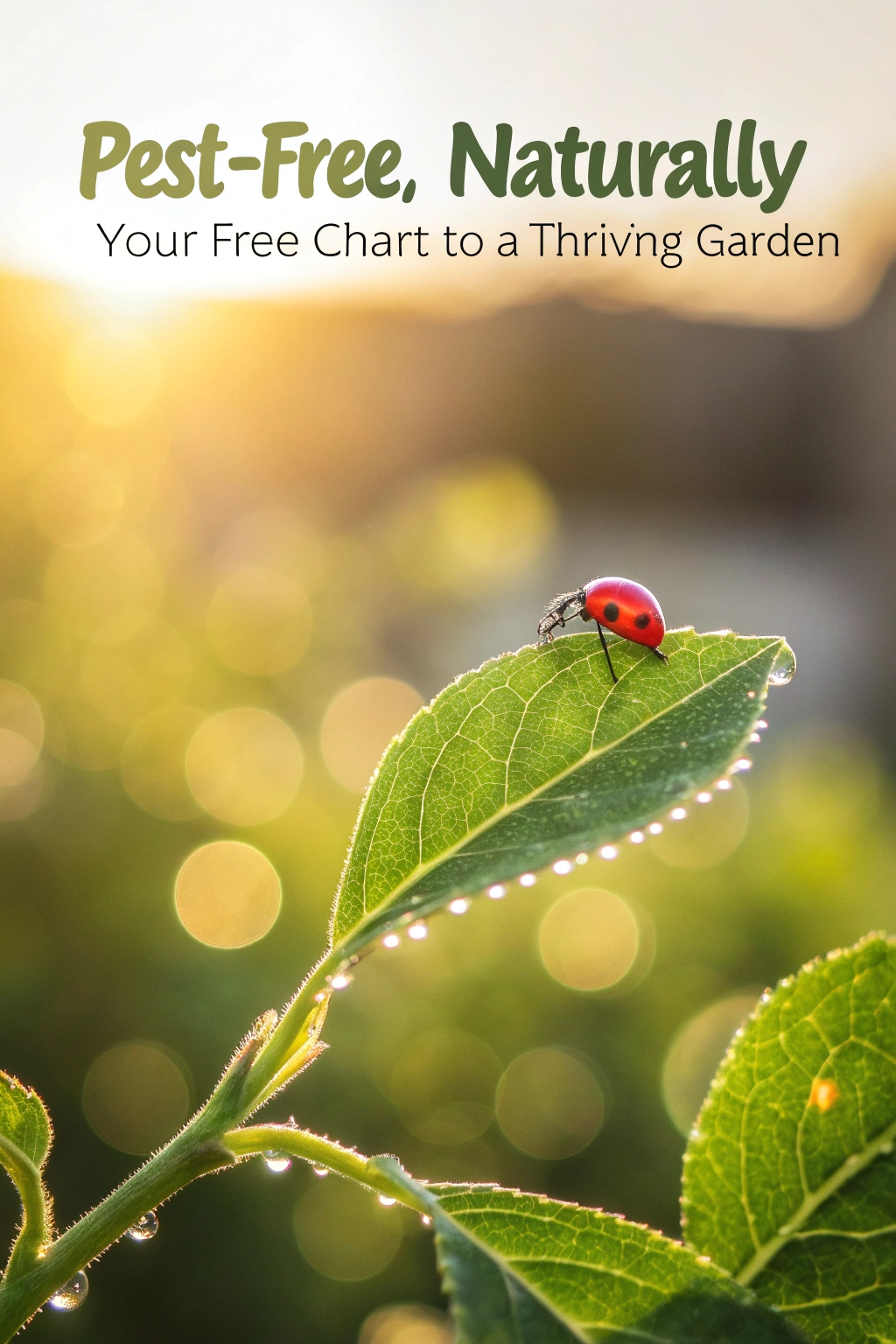Start a small vegetable garden and grow fresh food right at home! Pick a sunny spot with good soil.
Choose easy plants like tomatoes, lettuce, or carrots. These grow fast and need little care.
Need tips to succeed? Water regularly and keep weeds away. Use compost to make soil rich.
Watch for bugs and fix problems early. With simple steps, your garden will thrive!
Choose the Right Location
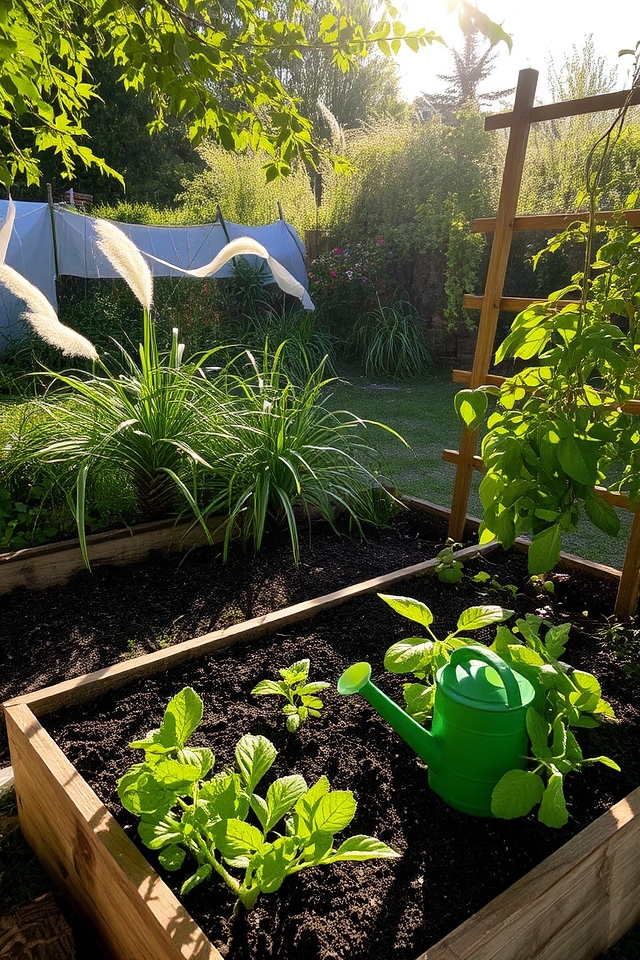
Choosing the right location for your small vegetable garden is vital for its success. Look for a spot that receives at least 6-8 hours of sunlight daily, as most vegetables thrive in full sun. Make certain the area has good drainage to prevent waterlogging, and consider proximity to a water source for easy irrigation. Additionally, selecting a location sheltered from strong winds can help protect delicate plants and improve overall growth.
Select Suitable Vegetables
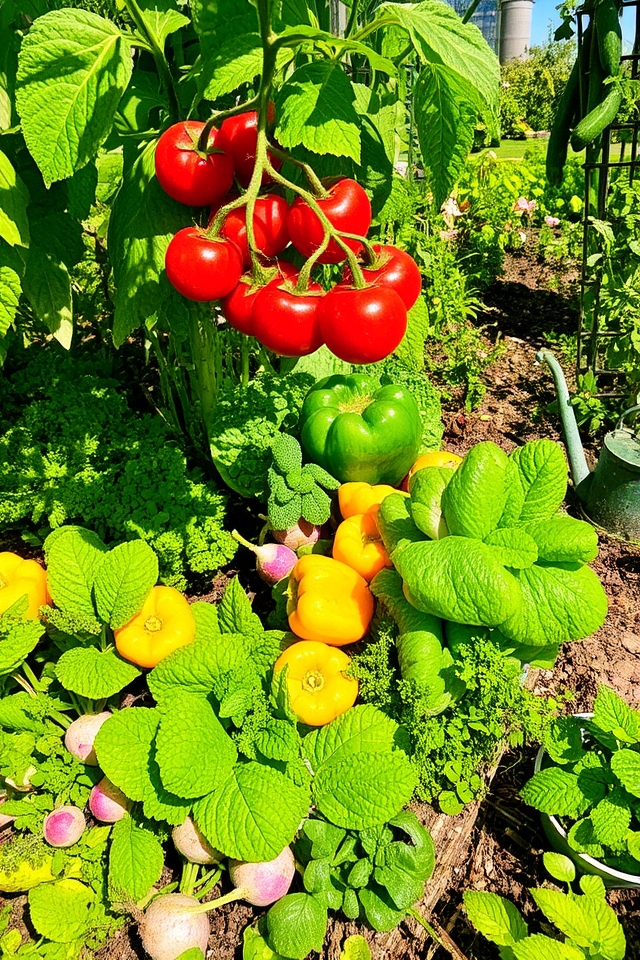
When selecting suitable vegetables for your small garden, consider your climate, space, and personal preferences. Opt for high-yield varieties that thrive in limited areas, such as tomatoes, peppers, radishes, and leafy greens. Choose vegetables that you enjoy eating and those that can be harvested continuously, like lettuce or herbs. Additionally, consider planting companion crops that can benefit each other, maximizing your small garden’s potential while ensuring a diverse and productive harvest.
Use Raised Beds or Containers
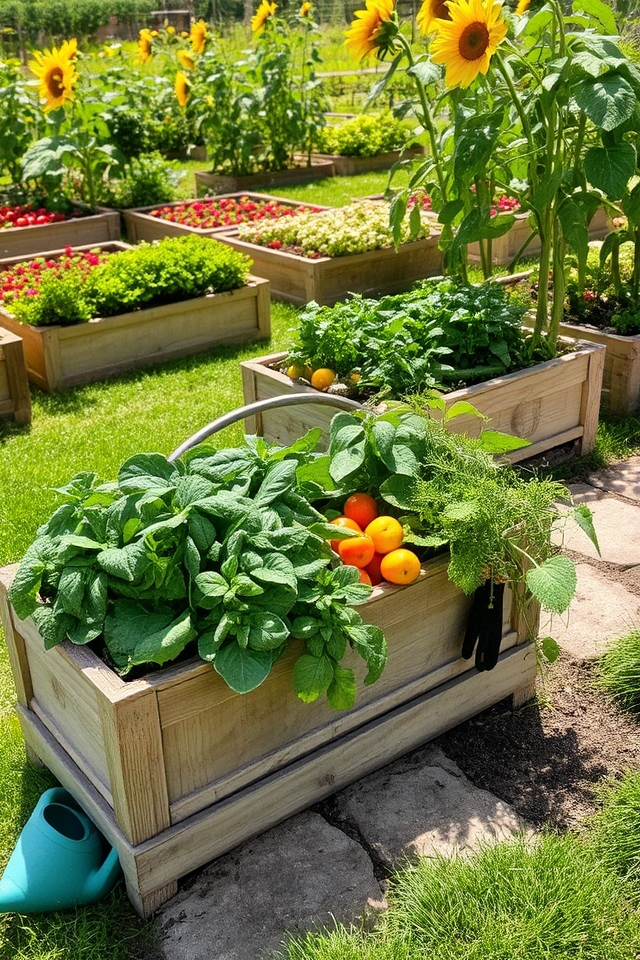
Using raised beds or containers is an excellent way to maximize space and improve the growing conditions for your small vegetable garden. Raised beds provide better drainage, allow for improved soil quality, and help with weed control. Containers, on the other hand, offer versatility in placement and can be moved to take advantage of sunlight. Both options enable you to customize the soil mix, making them perfect for growing a variety of vegetables in limited areas.
Optimize Soil Quality
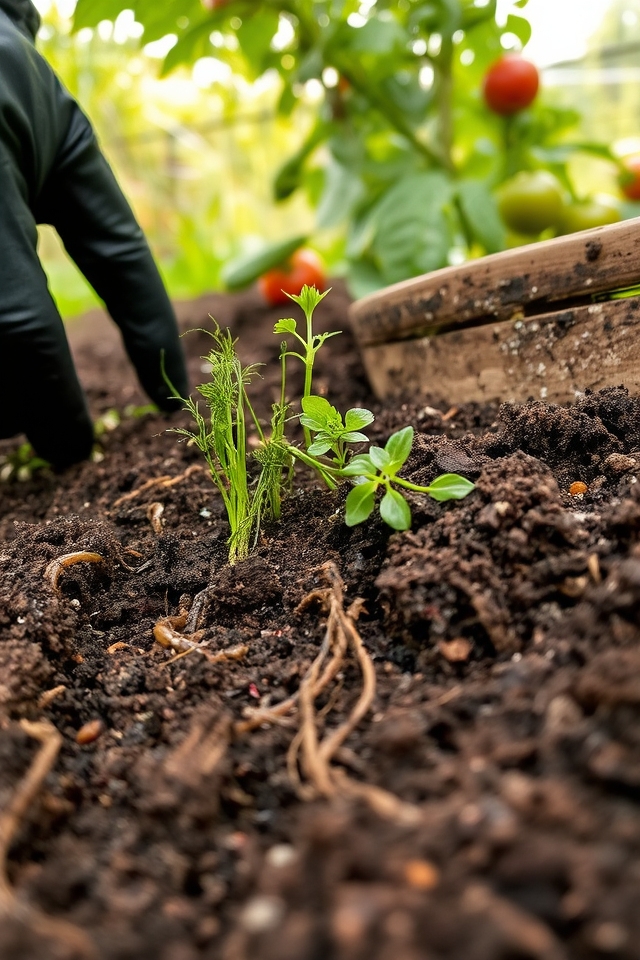
Optimizing soil quality is essential for a thriving small vegetable garden. Start by testing your soil’s pH and nutrient levels, as this will guide you in amending it appropriately. Incorporate organic matter such as compost or well-rotted manure to enhance soil fertility and structure. Additionally, practice crop rotation and cover cropping to replenish nutrients and suppress weeds. Regularly aerate the soil and guarantee proper drainage to promote root health, ultimately leading to a bountiful harvest.
Ensure Proper Drainage
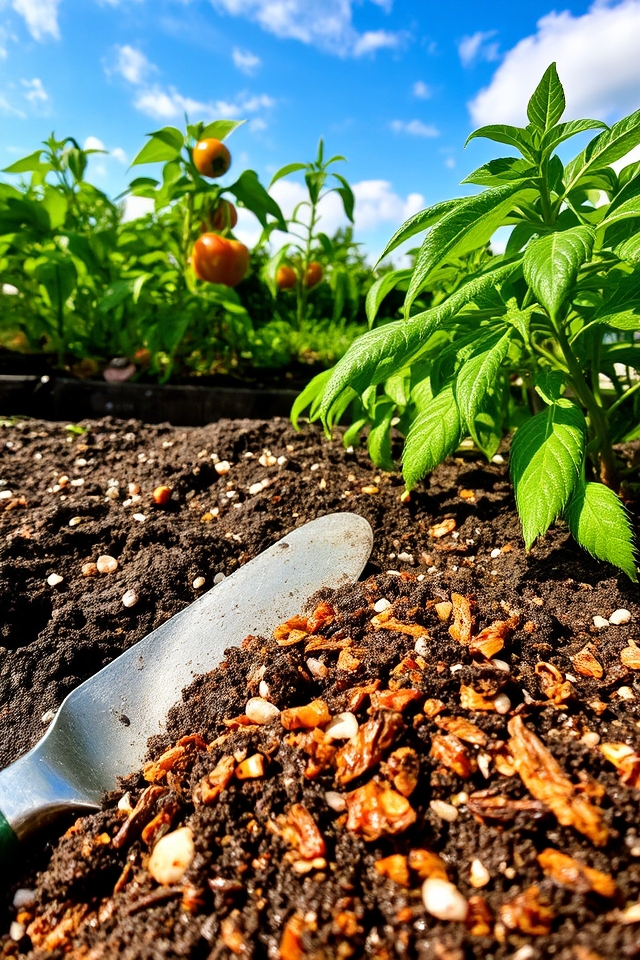
Ensuring proper drainage in your small vegetable garden is vital for healthy plant growth. Excess water can lead to root rot and other diseases, so it’s essential to create a well-draining soil environment. To achieve this, consider mixing compost or organic matter into the soil, which improves aeration and drainage. Additionally, using raised beds can help elevate your plants above waterlogged ground, allowing for better drainage and healthier root systems.
Practice Crop Rotation
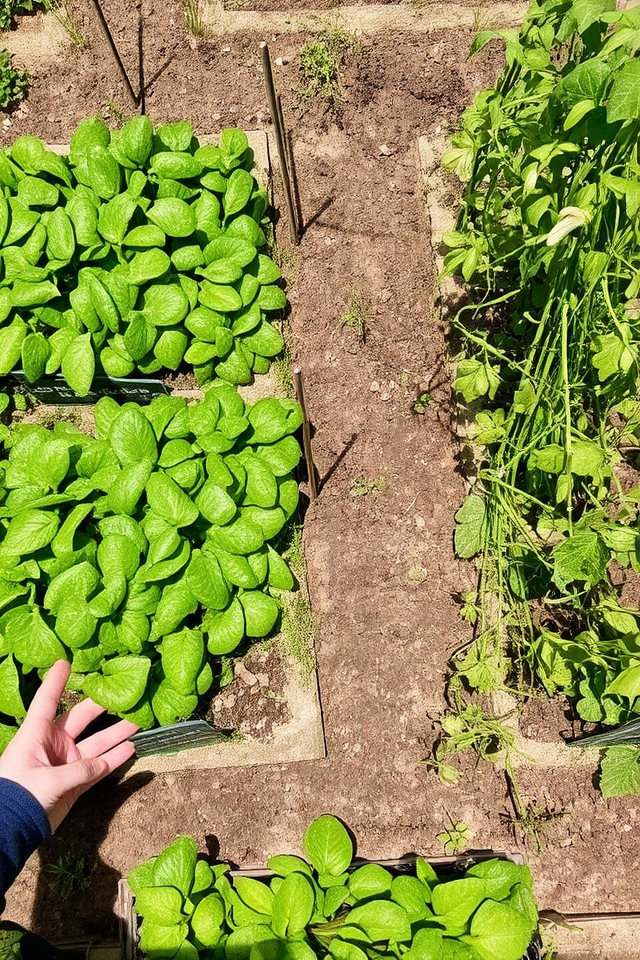
Crop rotation is an essential practice for maintaining soil health and maximizing productivity in small vegetable gardens. By alternating the types of crops grown in specific areas, you can prevent nutrient depletion, reduce pests and diseases, and enhance soil fertility. For instance, planting legumes one season can replenish nitrogen levels, while following them with leafy greens can benefit from this enrichment. Implementing a rotation schedule not only improves yields but also promotes a more sustainable gardening experience.
Implement Companion Planting
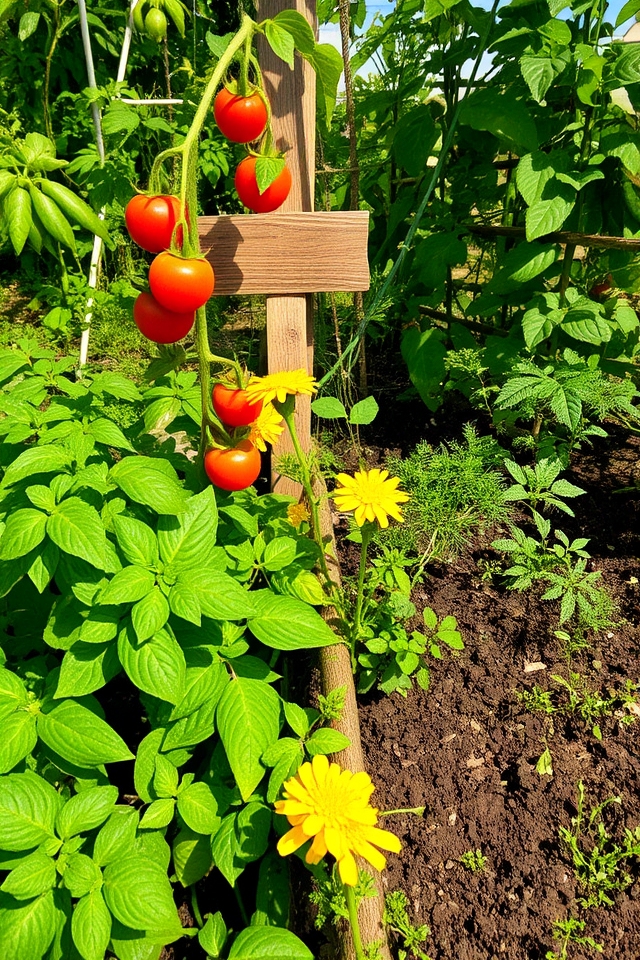
Implementing companion planting in your small vegetable garden can greatly enhance growth, deter pests, and maximize space. This technique involves pairing plants that benefit each other; for example, planting tomatoes with basil can improve flavor and help repel pests. Additionally, certain plants can naturally enrich the soil or attract beneficial insects. By strategically selecting companions, you can create a thriving ecosystem that supports healthy vegetables while minimizing the need for chemical interventions.
Water Efficiently
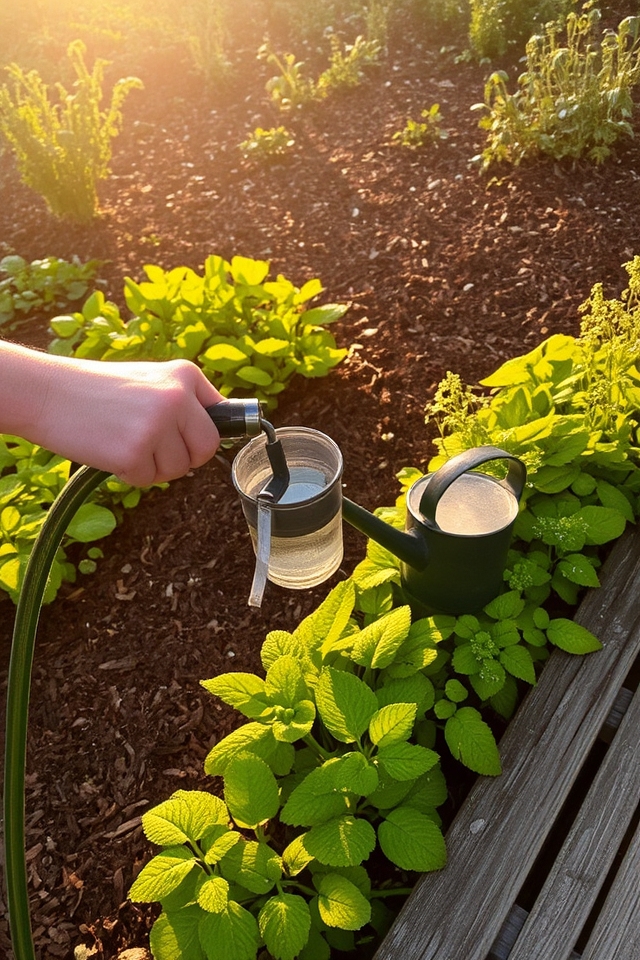
Watering efficiently is essential for small vegetable gardens, particularly to conserve resources and prevent overwatering. Aim to water early in the morning or late in the afternoon to reduce evaporation. Utilize soaker hoses or drip irrigation systems to deliver water directly to the roots, minimizing waste. Mulching around plants can help retain moisture in the soil. Always check the moisture level before watering to make sure your plants receive just the right amount of water.
Embrace Mulching
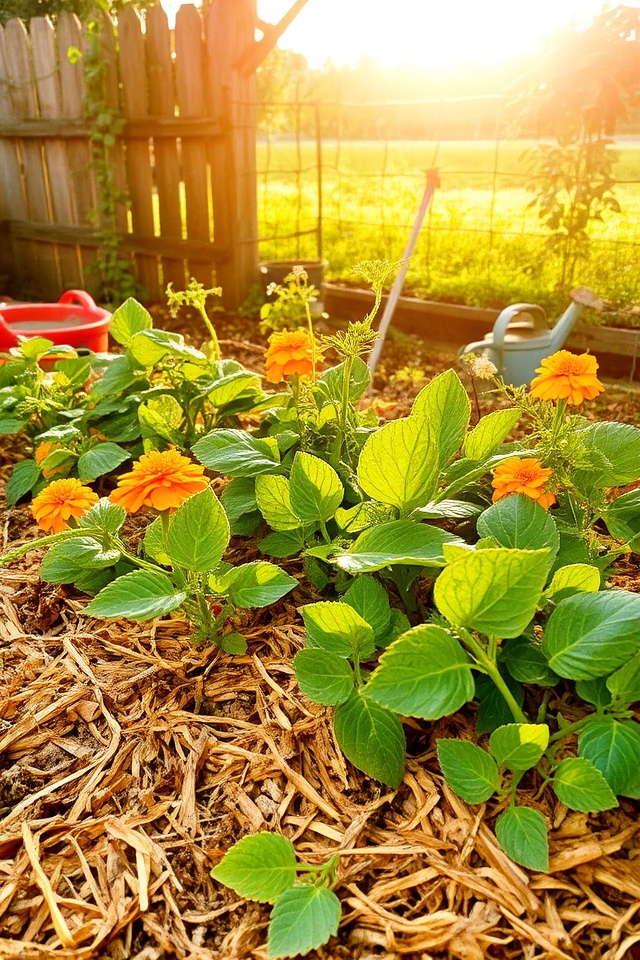
Embracing mulching in your small vegetable garden can greatly enhance plant health and reduce maintenance efforts. Mulch acts as a protective barrier, helping to retain soil moisture, suppress weeds, and regulate soil temperature. Organic mulches, such as straw, wood chips, or grass clippings, also enrich the soil as they decompose. Applying a layer of mulch around your vegetables not only promotes better growth but also creates a tidy, attractive garden space.
Control Pests Naturally
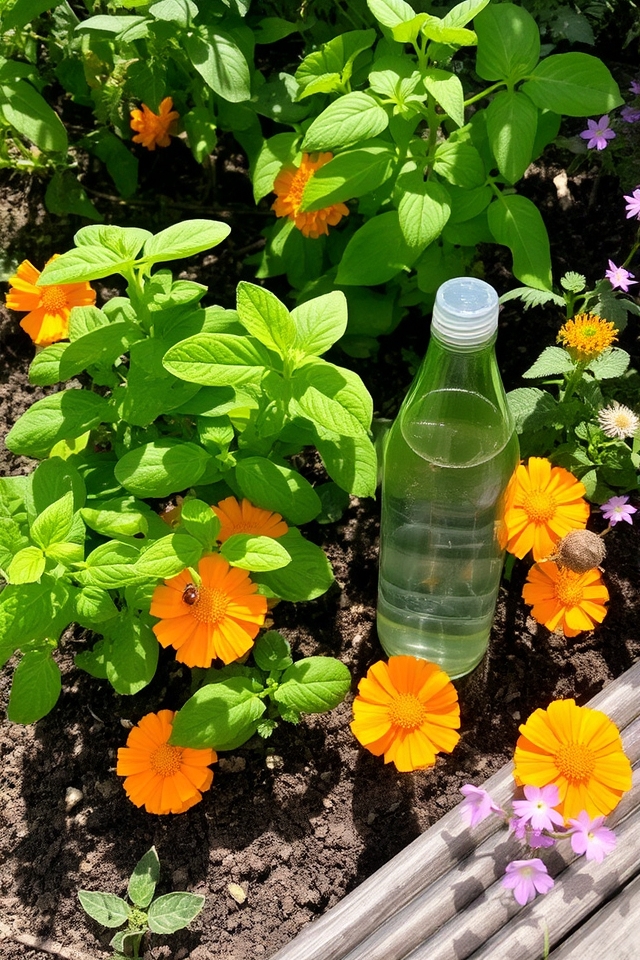
Controlling pests naturally in small vegetable gardens can be effectively achieved by utilizing companion planting, introducing beneficial insects, and employing natural repellents. Planting herbs like basil and marigolds alongside vegetables can deter harmful pests. Attracting ladybugs and lacewings will help manage aphid populations. Additionally, homemade sprays using garlic or neem oil can provide protective barriers without harsh chemicals, ensuring your garden remains healthy and productive while promoting a balanced ecosystem.
Provide Adequate Sunlight
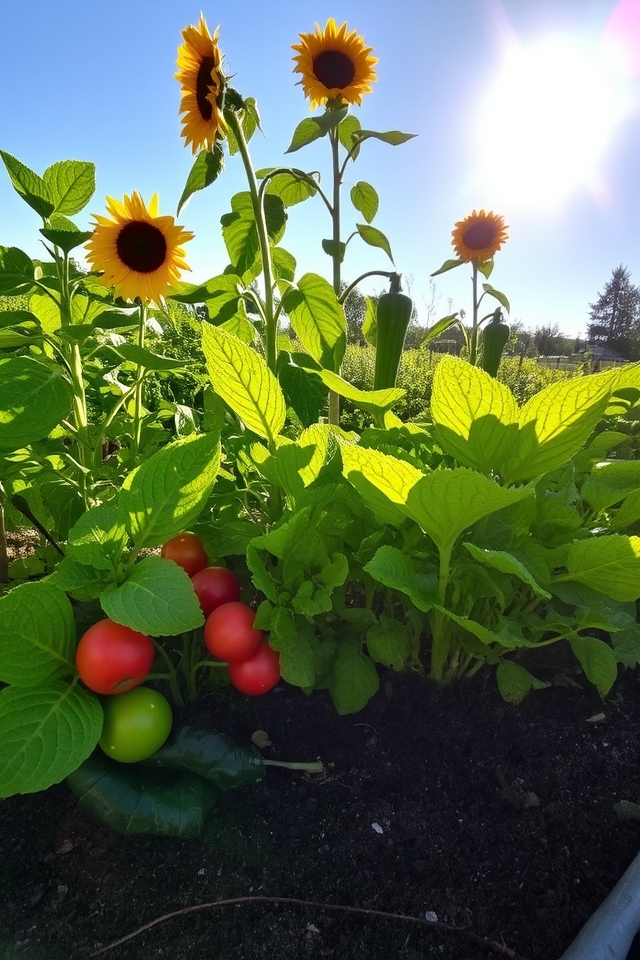
Providing adequate sunlight is essential for the success of your small vegetable garden. Most vegetables require at least 6-8 hours of direct sunlight each day to thrive, producing healthy foliage and fruitful yields. When planning your garden layout, observe sun patterns and avoid placing taller plants that may shade smaller ones. If your garden receives limited sunlight, consider using reflective surfaces or planting sun-loving vegetables that tolerate partial shade. Proper light exposure guarantees your plants grow strong and productive.
Explore Vertical Gardening
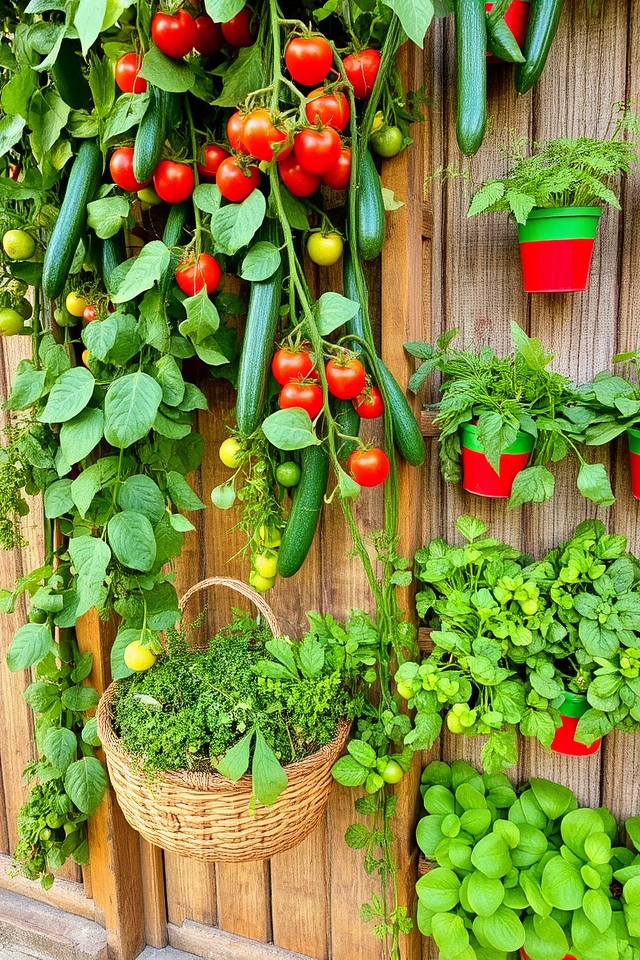
Vertical gardening is an innovative technique that maximizes space by growing plants upward instead of outward. Ideal for small vegetable gardens, it involves using trellises, wall planters, or hanging pots to cultivate crops like tomatoes, cucumbers, and herbs. This method not only optimizes limited space, but also improves air circulation and sunlight exposure for plants. Plus, vertical gardens can be visually appealing, adding a touch of greenery to balconies, patios, or small yards while making gardening accessible and efficient.
Plant Seasonally

Planting seasonally is essential for a thriving small vegetable garden. By aligning your planting schedule with the local climate and seasonal changes, you can maximize growth and yield. Start with cool-weather crops like lettuce and peas in early spring, then shift to warm-weather favorites such as tomatoes and peppers in late spring. As summer fades to fall, consider planting hardy vegetables like kale and carrots that can withstand cooler temperatures. This approach not only enhances your garden’s productivity but also promotes a lush, diverse harvest throughout the year.
Use Fertilizers Wisely
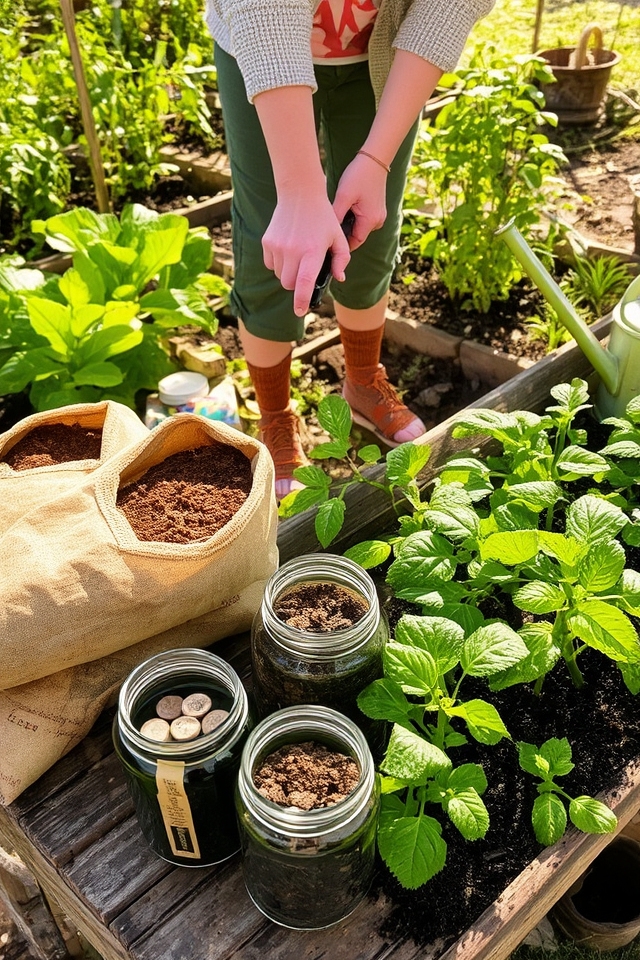
Using fertilizers wisely in small vegetable gardens is vital for maximizing plant health and yield. Start by selecting organic or slow-release options to provide essential nutrients without overwhelming your plants. Conduct a soil test to determine specific nutrient needs, and apply fertilizers at the recommended rates. Timing is also key; apply during the growing season when plants require the most nourishment. Finally, avoid over-fertilization, as this can lead to nutrient runoff and harm the environment.
Keep a Gardening Journal
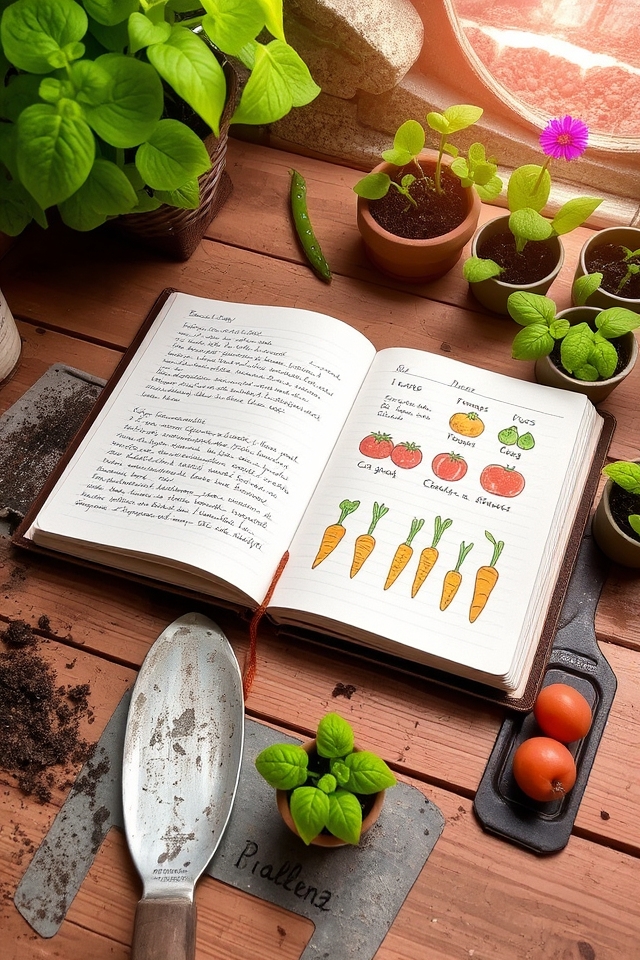
Keeping a gardening journal is an invaluable tool for small vegetable garden success. By documenting your planting dates, weather conditions, pest occurrences, and growth patterns, you can track what works and what doesn’t. This practice helps identify successful techniques and provides insights for future seasons. Additionally, a gardening journal allows you to reflect on your experiences, fostering a deeper connection with your garden. It’s a perfect way to learn and improve your gardening skills over time.
Harvest Regularly
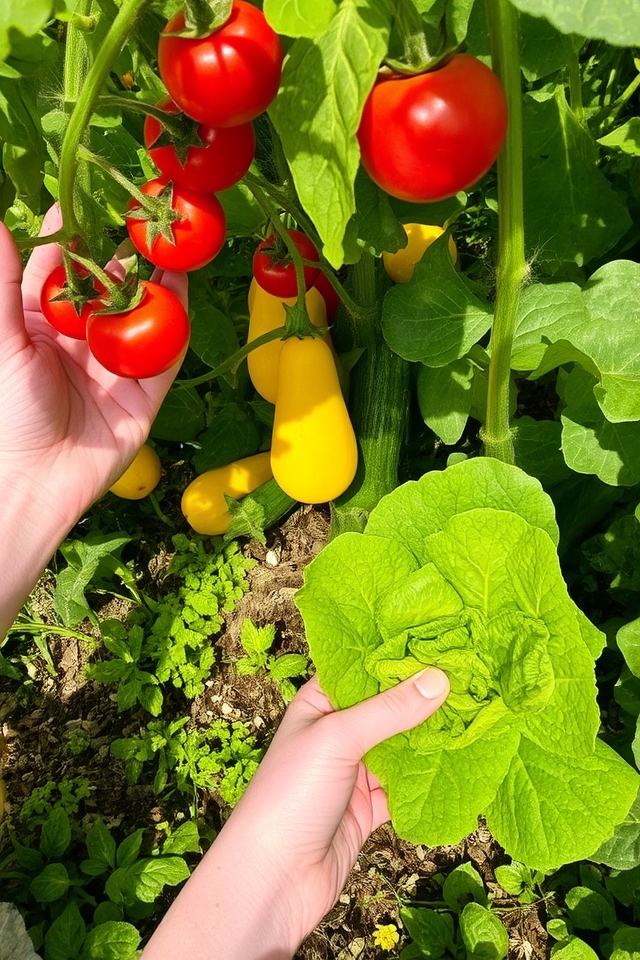
Harvesting regularly is essential for maintaining a productive small vegetable garden. Frequent harvesting encourages your plants to produce more, as it signals them to focus on growth rather than maturity. It also guarantees that your vegetables are picked at their peak ripeness, yielding maximum flavor and nutrition. Check your garden every few days to gather ripe produce and remove any overripe fruits or vegetables to prevent them from attracting pests. Happy harvesting!
Learn From Each Season
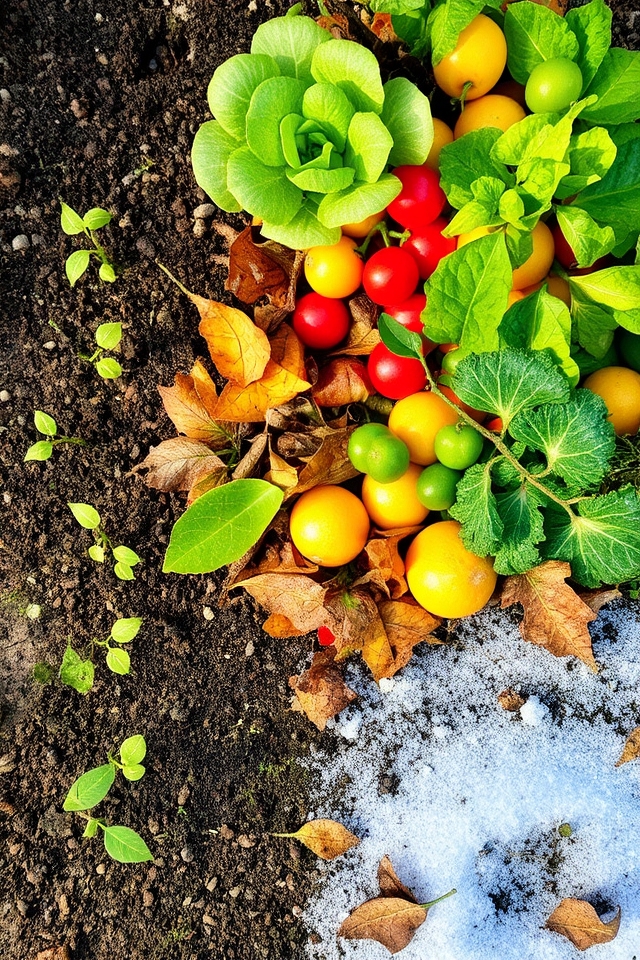
Seasonal gardening offers invaluable lessons that can enhance your small vegetable garden. Each season presents unique challenges and opportunities, from understanding frost dates to recognizing which plants thrive in warmer weather. By observing plant growth patterns, pest behavior, and soil conditions throughout the year, gardeners can refine their techniques and make informed decisions for future seasons. Embrace the cycle of seasons to cultivate a thriving garden that evolves with time.
Conclusion
In the quest for a thriving vegetable garden, it’s ironic how much we can learn from a tiny patch of earth. You might think success hinges solely on sunlight and soil, but the real secret lies in your willingness to adapt. By experimenting with techniques, keeping a journal, and harvesting on time, you’ll discover that gardening is less about perfection and more about growth—both of your plants and your skills. Embrace the journey, and watch your garden flourish!



